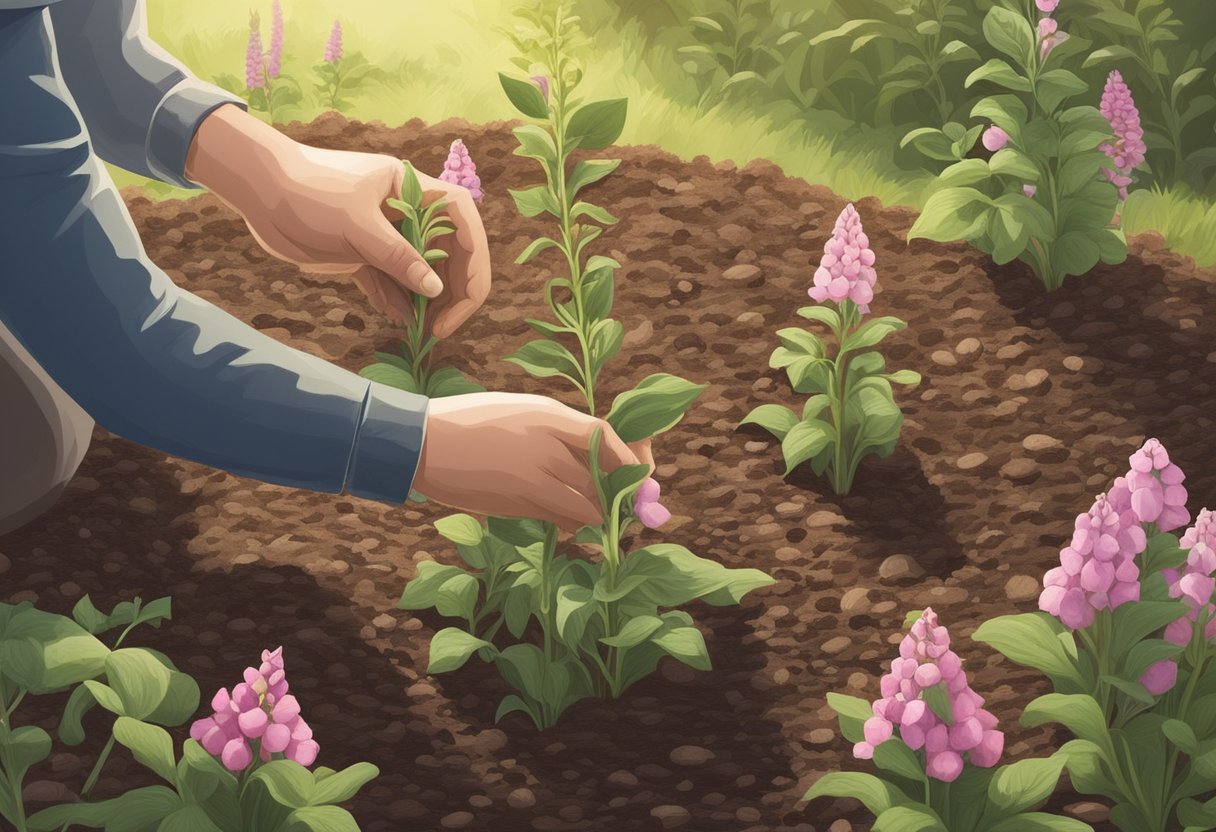When it comes to planting foxgloves, timing is crucial for successful germination and flowering. I’ve discovered that foxgloves, scientifically known as Digitalis, flourish best when their seeds are sown at the correct time of year. They are biennial or short-lived perennials that add height and vibrant blooms to garden spaces.

In my experience, the ideal time to plant foxglove seeds is in early summer, directly into the garden. In milder climates, autumn sowing can also yield good results as it provides a jumpstart to growth come spring.
These statuesque flowers thrive in a variety of conditions, but they do prefer a spot in the garden that provides morning sunlight and afternoon shade. This helps ensure robust growth while protecting the plants from the harshest rays of the day. The seeds of foxgloves are minuscule and require light to germinate, meaning that when I sow them, I distribute them on top of the soil and keep the earth moist without covering the seeds with more soil. With optimal growing conditions, which include keeping the soil moist and providing the right light exposure, foxglove seeds will reliably grow, beautifying your garden with their elongated spikes of tubular flowers.
JUMP TO TOPIC
Cultivating Foxglove Successfully
Growing foxgloves can be a delightful addition to your garden, yielding tall, vibrant spikes of tubular flowers. To ensure successful cultivation, it is vital to plant foxglove seeds at the right time, in the proper soil, and sowing them correctly to facilitate germination.
Best Season for Planting Foxglove
I recommend sowing foxglove seeds in early spring, after the threat of frost has passed. It’s crucial for the seeds to have enough time to establish themselves before warmer temperatures kick in.
Selecting the Right Soil for Optimal Growth
Foxgloves thrive in rich, well-draining soil. The ideal pH level for foxglove is slightly acidic to neutral, ranging from 6.0 to 7.0. I make sure that my soil is fertile, incorporating organic matter if necessary to improve the quality and drainage capabilities.
Sowing Foxglove Seeds Effectively
💥 Remember: Foxglove seeds require light to germinate, so do not cover them with soil after sowing.
To sow foxglove seeds:
- 1. Scatter the seeds: Gently scatter the seeds on the surface of the moist soil.
- 2. Press gently: Lightly press the seeds into the soil to ensure they are in contact with the soil, without burying them.
- 3. Water carefully: Use a fine mist or bottom water to keep the soil moist without displacing the seeds.
- 4. Provide warmth: A heat mat can help maintain a consistent soil temperature.
- 5. Ensure enough light: Place the seedlings in a location where they can receive plenty of indirect sunlight or partial shade.
Foxglove Care and Maintenance
Caring for foxgloves requires attention to watering, pest management, and soil nutrition. By understanding these needs, you can ensure your foxgloves thrive.
Watering and Moisture Management
Foxgloves prefer consistently moist soil, especially during their peak growing and blooming periods in the summer. I ensure that they receive plenty of water but also take care not to overwater, as this can lead to root problems. Here’s how I handle the watering:
Mulching: I apply a layer of mulch to help retain moisture and control weeds.
Dealing with Disease and Pests
Foxgloves can attract pests like aphids and suffer from diseases such as powdery mildew or rust. Here’s what I do to manage these challenges:
💥 Integrated Pest Management: I use organic methods to deal with pests, such as encouraging beneficial insects or applying insecticidal soap for aphids. For diseases, I make sure there’s good air circulation around the plants and remove any affected foliage promptly.
Always wear gloves when handling foxgloves, as all parts of the plant are toxic.
Fertilization and Soil Nutrition
Foxgloves thrive in rich, well-draining soil. Here’s my approach to nutrition:
| Soil Preparation | Fertilization |
|---|---|
| Before planting, I incorporate organic matter like compost to enrich the soil. | I apply a balanced fertilizer in the spring to support growth but stop feeding in fall to prepare the plant for dormancy. |
Biennial varieties will not need fertilization in the second year after they have bloomed and can be allowed to die back. The primary goal is to provide enough nutrients during the active growth phase without over-fertilizing, which can cause more foliage growth at the expense of flowers.
When to Plant Foxglove Seeds
Foxgloves enchant with their vivid, bell-shaped flowers, soaring as a favorite in cottage gardens. To ensure these striking plants thrive, it’s essential to recognize their lifecycle and select the right varieties for your garden.
Distinguishing Between Biennial and Perennial Varieties
Most commonly, foxgloves (Digitalis purpurea) are biennials, meaning they complete their lifecycle over two years. In the first year, they grow foliage but don’t bloom. It’s in the second year that their iconic flowers emerge. There are also perennial varieties, which can bloom for several years with the right care. An understanding of your foxglove’s nature is crucial when planning your garden, as it determines when and how often you’ll witness their blooms.
Various Colors and Heights of Foxgloves
💥 Striking Varieties
Beyond lifespan, foxgloves boast a range of colors and sizes, with hues such as pink, purple, white, yellow, and even red. Heights can vary dramatically, with some towering up to 6 feet, while others are more compact, suitable for smaller spaces or front-of-border positions. The variety you choose will dictate not only the visual impact in your garden but also spacing and pairing with other plants.
Safe Planting and Environmental Considerations
When planting foxglove, safety for pets and children is paramount as the plant is poisonous. Ensure proper spacing for healthy growth and consider the benefits foxglove brings to hummingbirds and bees in your garden environment.
Foxglov












